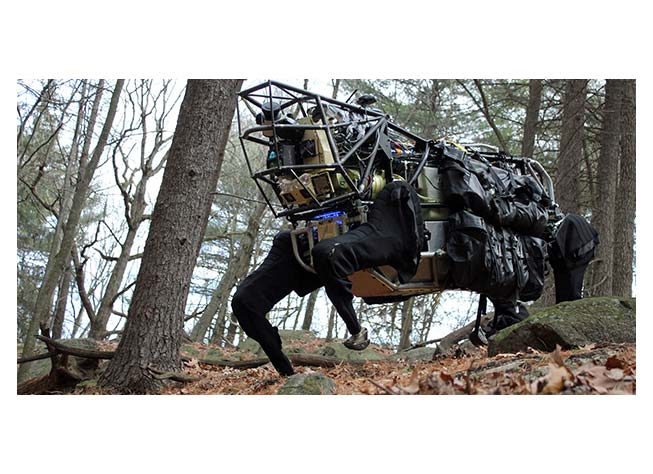To help alleviate physical weight on troops, DARPA developed a four-legged robot, the Legged Squad Support System (LS3), to integrate with squads of Marines or Soldiers.
LS3 demonstrated that a highly mobile, semi-autonomous legged robot could carry 400 lbs of a squads load, follow squad members through rugged terrain and interact with troops in a natural way, similar to a trained animal and its handler.
The LS3 program goal was to develop a robot that could go through the same terrain the squad goes through without hindering the squads mission. The robot could also serve as a mobile auxiliary power source to the squad, so troops could recharge batteries for radios and handheld devices while on patrol.
In January 2012, the LS3 prototype completed its first outdoor assessment, demonstrating mobility by climbing and descending a hill and exercising its perception capabilities. A two-year, platform-refinement test cycle began in July 2012, with U.S. Marine Corps and U.S. Army involvement, culminating in a capstone exercise where LS3 embedded with Marines conducting field exercises.
LS3 represents the culmination of a decade of research in perception and autonomy with programs like DARPAs Unmanned Ground Combat Vehicle-Perception for Off-Road Robotics Integration (UPI) program, mobility work with DARPAs Big Dog and significant advances in natural human-robot interface such as voice recognition.
